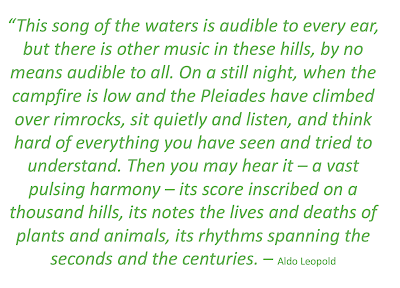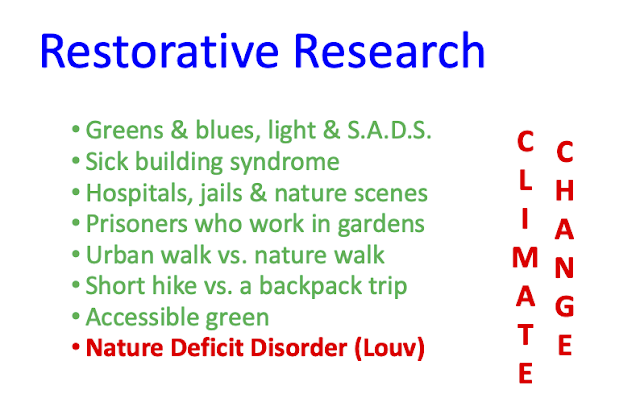CONSCIOUSNESS IN ANIMALS, NATURE & US #6
The Wild Beings
“Ask of the wild animals and they shall teach you and the birds of the sky shall tell it to you or speak to the earth for she shall guide you and the fishes of the sea will declare it to you.” Job
“All humans are endowed with the attributes of animals.” Cordova
“If the people had not been gifted with Divinely inspired scriptures, they could have learned all they needed to know from the animals themselves.” The Zohar
Nature, including the wild animals, contained all the “Scriptures” that hunter-gatherers needed for survival and healing. The San Bushman were at one with the wild beings, growing beings and still beings they depended on to survive. They could mimic animal behavior brilliantly - in order to be able to hunt an animal they had to “become” that animal. A natural consequence of this, for a few of the powerful shamans, was the ability to shape shift into animals in trance states. This can be seen in their rock art and also that of other indigenous peoples. They understood the meaning of “dancing with them.”
San Bushman
Similarly animals whisperers can “dance” in a sense with the animal. It is a dance of unconditional love without any of the fear that many of us may feel especially when encountering a dysfunctional pet or a wild animal. Nature allowed the San to find the “middle way of the Buddha; between up and down, light and dark, day and night, summer and winter, terrified and tranquil, hungry and satiated, thirsty and quenched, hot and freezing, living and dying, healing and sickness. This seemed to give them the equanimity I witnessed on my many trips to be with them. There were times I felt I had dropped into a Buddhist sangha. They knew what it was to be humble and not to judge, to have an unconditional positive regard for each other and an unconditional love for children – even not their own. They had no leader and were egalitarian. Women and men had equal say and equal traction in healing and trancing. Their harmony with nature and their spiritual purity enabled them to travel out of body in the trance dance and do extraordinary things such as distant viewing to know where to find water and hunt and also distant diagnosis obtained from non local information while traveling out of body into the spirit world. When returning from trance they would put Num energy into those ailing which resembled a form of Shaktipat – Num being the equivalent of kundalini. Without this connection with the "dance" in all its forms they could never have survived or even have thrived in the Kalahari desert.
All animals have special abilities – maybe even more than we realize but one could question whether this is consciousness. Certainly not human or talking being consciousness but nevertheless, their own special consciousness. We are all animated by the breath of the Creator - "the Spirit that moves in all things." The Wild Beings have different vibrational awarenesses and intelligence that can be extraordinary. Certain animals have even been shown to have self-awareness.
Dogs (horses and cats as well) have been known to travel long distances to find their owners even in locations unknown to them. Maybe they like the San can,
"put on human mind and see how they are moving."
Dogs used by the customs authorities can smell tiny amounts of chemicals, in explosives or illegal drugs hidden in a suitcase. They can also almost unerringly detect prostate cancer in urine samples of patients with the disease. They have also been trained, like elephants and rats, to detect explosive devices in mine fields. Rupert Sheldrake has done experiments in dogs who know when their owners are coming home even at varying and unpredictable times and even if they walk and there is no auditory feedback to alert them. Dogs grieve and get depressed if their companion dies. A dog can also die from a broken heart. Experience tells dog owners to replace the lost companion as soon as possible to avert this. Dogs also feel shame, manifested in their expressions.
A patient of mine who raised race horses felt that some horses also felt shame, so much so that they would never race again if they lost a race.
Certain birds know instinctively where to navigate and migrate to as do homing pigeons. Meteorologists now believe that by watching when migrating bird decide to leave they can help predict weather catastrophes. The birds seem able have their own inner meteorologist.
Lions are incredibly intelligent and have learned new hunting techniques to adapt to circumstances. I was once witnessed a lioness kill an antelope. She used the car between her and the vehicle moving towards an impala as a decoy which enabled her to charge her prey and bring it down effortlessly. No doubt the exhaust fumes also masked her scent. Illegal immigrants crossing from Mozambique through the Kruger game park, for fear of attacks from predators would make loud noises by banging metal on metal. It was not long before the lions recognized the sound as a dinner gong. In the Okavango swamps of Botswana they have learned to hunt elephants by adapting intelligent cooperative strategies. Lions in certain parks in South Africa have learned how to open the doors of a vehicle so that they could prey on its occupants.
African weaver birds have been studied even as far back as the 17th century and more recently.
“and this they do though they never saw nor could see any nest made, that is though taken from the nest and brought up by hand.” John Ray
Even after successive generations of the baby birds being separated from their parents early in life they instinctively know how to weave their complex and exquisites nests.
Rupert Sheldrake described morphogenetic fields and morphic resonance in this way:
“Each thing in nature has a collective memory which shapes its form.”
The Ancestors endorse this concept;
“The sages teach that all that happens, happens as it must. What occurs cannot occur contrary to the conditions of its occurring or contrary to its nature. A cedar does not arise from an acorn.”
Just as only a cutting from a plant can create another plant because of morphic resonance so the weaver bird also knows how to make a nest. Morphic resonance may be a form of collective unconscious among growing beings and the wild beings.
The hundredth monkey concept may also be a manifestation of this when the field of morphic resonance becomes non-local in space.
Biologists observed that some macaque monkeys learned to wash sweet potatoes, and gradually this new behavior spread through the younger generation of monkeys—in the usual fashion, through observation and repetition. However, once a critical number of monkeys was reached, i.e., "the hundredth monkey," this previously learned behavior seemed to spread across the ocean to monkeys on nearby islands.
A similar affect may be extended to the Still Beings. When the first scientists tried to recreate a crystal it was a laborious and timely task. When other scientists did the same thing the crystals seem to grow at a much faster rate using the same techniques. Morphic resonance in general and certainly this phenomenon in an inanimate object has been disputed by scientists but is an interesting observation and may be valid nevertheless.
Biologists have shown that some animals have self-awareness using a mirror test. These include; bottlenose dolphins, elephants, chimpanzees, magpies, wolves, otters, geese and sea lions. The classic way of testing an animal for self-awareness is to see if it can recognize itself in a mirror. On first glance, all species react by making the appropriate social gestures, inspecting the mirror, and often checking behind it to look for the stranger.
Dolphins and elephants have both been known to save and protect humans. Elephants have passed a test of intelligence which scientists say has “profound” implications for our understanding of their mental capabilities. They were found to be capable of performing a task that showed they have a level of self-understanding that is rare in the animal world and supersedes humans until after the age of two years. The new test, involved picking up a stick and handing it to a researcher. But sometimes the stick was tied to a mat on which the elephant had to stand to reach it. This meant they had to realize their own body was preventing them from passing on the stick and get off the mat in order to complete the task. These scientists theorized that an animal capable of this kind of behavior might also be better at empathizing with others. Elephant bones often have tracks going to them along with the dung from visiting elephants. They are often are found inspecting the bones of their deceased. Cynthia Moss an elephant researcher in Kenya has described and documented on film what looked like a funeral procession with one elephant passing the bone of a deceased elephant back to the next one in the line behind and so on down the length of the procession. The facial expression and cries of a mother elephant trying to lift the body of her baby seems to be one of extreme torment and grief. Elephants have exquisite sense of smell and are able to discern different human tribes from the same area. This might be why “they never forget.”
To experience the Wild Beings we must dance with them...
If we want to do this we have to slow to their vibration with a love vibration. An alfa state of a relaxed Zen type of consciousness helps.
Next week's blog will be on the remarkable talents of animal whisperers.
Click of the link to download and play and maybe dance.
Wild is Life Trust and ZEN - Jerusalema Challenge - Wild Is ...www.facebook.com › WILDISLIFE › videos › jerusalem...












